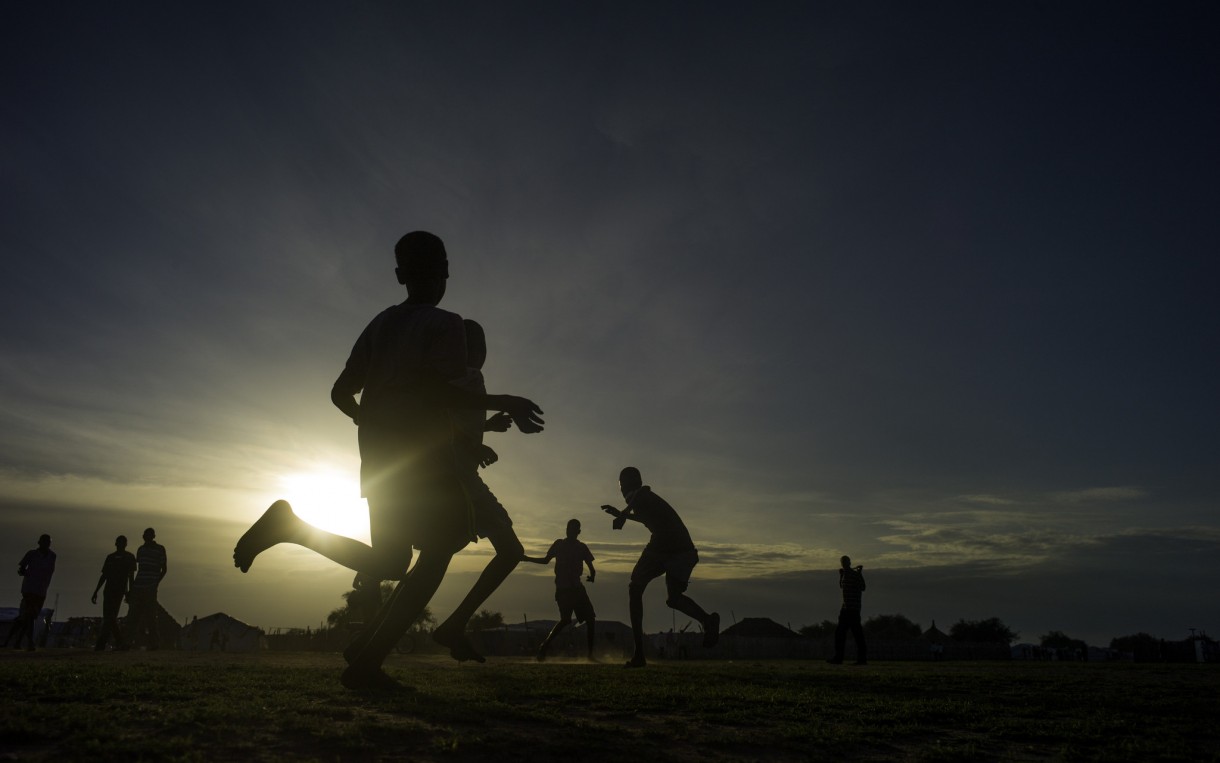Why I’ll never look at Independence Day the same way again
 Children play soccer as the sun sets over a camp for displaced people in Mingkaman, South Sudan. Oxfam is working in the camp to provide clean water and sanitation. Photo: Kieran Doherty/Oxfam
Children play soccer as the sun sets over a camp for displaced people in Mingkaman, South Sudan. Oxfam is working in the camp to provide clean water and sanitation. Photo: Kieran Doherty/Oxfam
“This the part where I tell you all isn’t hopeless in South Sudan. Because it isn’t.”
By Vanessa Parra, humanitarian press officer at Oxfam America.
I imagine Independence Day this year in the US was a festive affair. Everyone sitting outside in the dewy summer early evening heat to watch the fireworks after a day of hotdogs and hamburgers, ice cream cones and chips. Kids were probably running around, friends and family catching up. It is a wonderful American holiday, and one full of remembrance and hope, one day that people can always look forward to.
This year, I spent the fourth of July in a very different place—in Juba, South Sudan, where I’m working on communications for Oxfam. Yesterday, July 9, was actually Independence Day here in South Sudan, and I can’t help but notice the contrast.
Only three years ago thousands and thousands of people were celebrating here in Juba, waving flags and euphoric after years of war and conflict. Decades of brutal fighting and bloodletting left its scars on the people of South Sudan, but they were looking forward to a bright future, one where there was peace and healing. But peace was not easy and the cracks began to show within the ruling political party when fallout between the president and his former deputy led to fighting yet again. By mid-December last year, the fissures in the government of South Sudan escalated into violence which settled largely upon ethnic lines. Tens of thousands of people have now been killed.
Celebrating three years of independence as the world’s youngest county, the people of South Sudan are hopeful but subdued. Juba was quiet yesterday – many are staying home and out of the way, waiting for the day to come and go, a sad reflection after the state of affairs compared to what came only a few short years before. I’ve spent many a July 4th sprawled out on a blanket enjoying the weather and the company of my loved ones thinking of it as the most normal thing in the world. But being here for South Sudan’s independence day has proved a stark comparison to that experience.
Where is South Sudan today? On the precipice. Since the fighting started, the humanitarian situation has steadily gotten worse. Nearly 4 million – a third of the country’s population – are at risk of severe hunger and an aid effort that has only so far reached those who need it the most. The UN has warned that if aid doesn’t come through, 50,000 children could die from malnutrition. Since the current crisis began in December last year, fighting has forced 1.5 million people from their homes and numbers continuing to rise every day the conflict continues. These numbers are staggering and hard to wrap our minds around but they represent mothers, fathers, sisters, brothers, aunts, and uncles – human beings going through some of the absolute worst anyone can envision.
This is the part where I tell you all isn’t hopeless, because it isn’t. This is a political crisis turned violent, one that does not have to go on endlessly. As Oxfam International’s Executive Director said this week, “The people of South Sudan can only put their lives back together once the fighting ends. While peace talks remain stalled there will be little hope of a swift end to the conflict without sustained pressure on all parties to come to a peaceful resolution. That peace will only last if it meets the needs of all South Sudan’s people.”
As South Sudan’s families hang on to the hope of a better future, you have the power to help. Donate now.